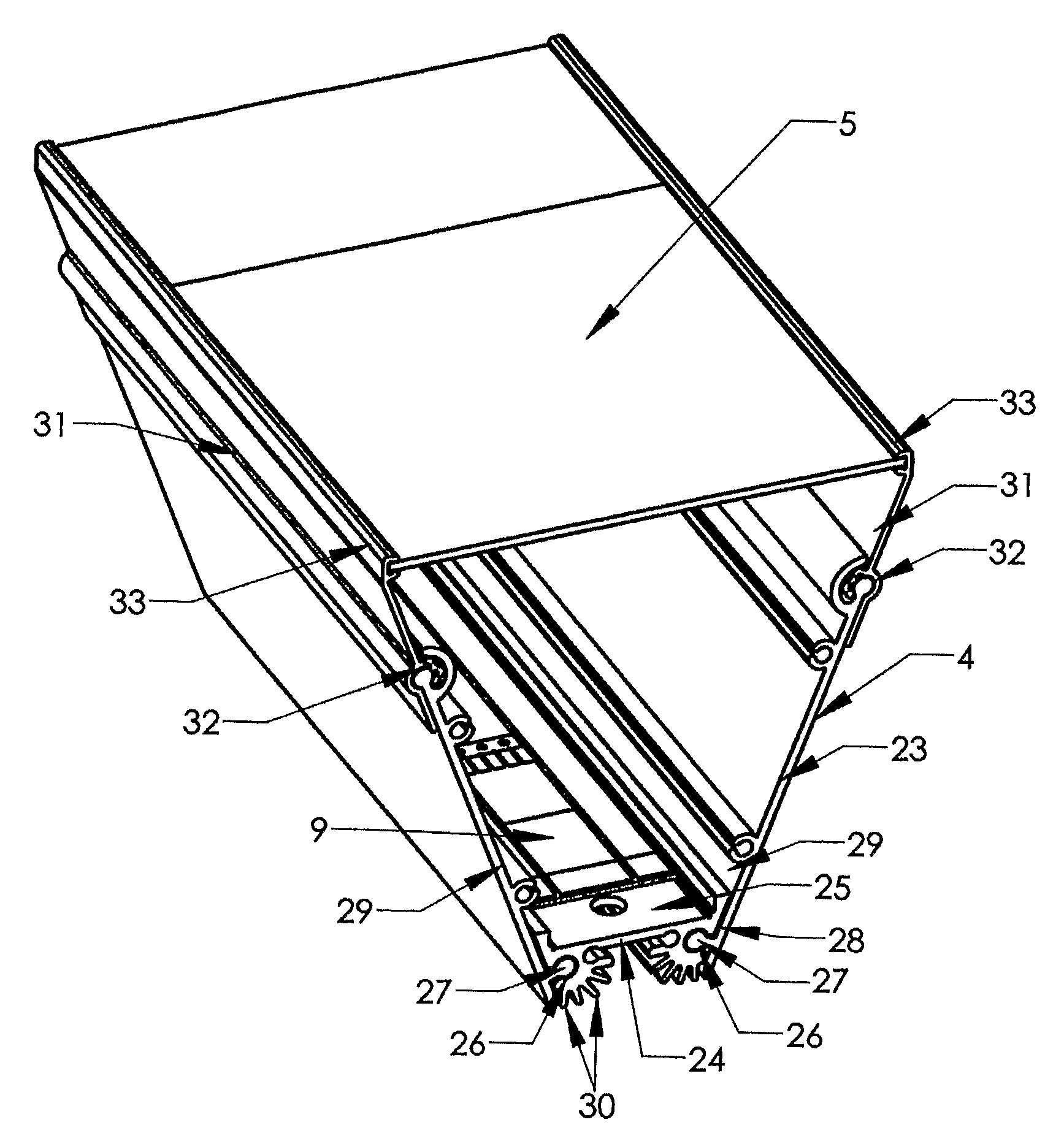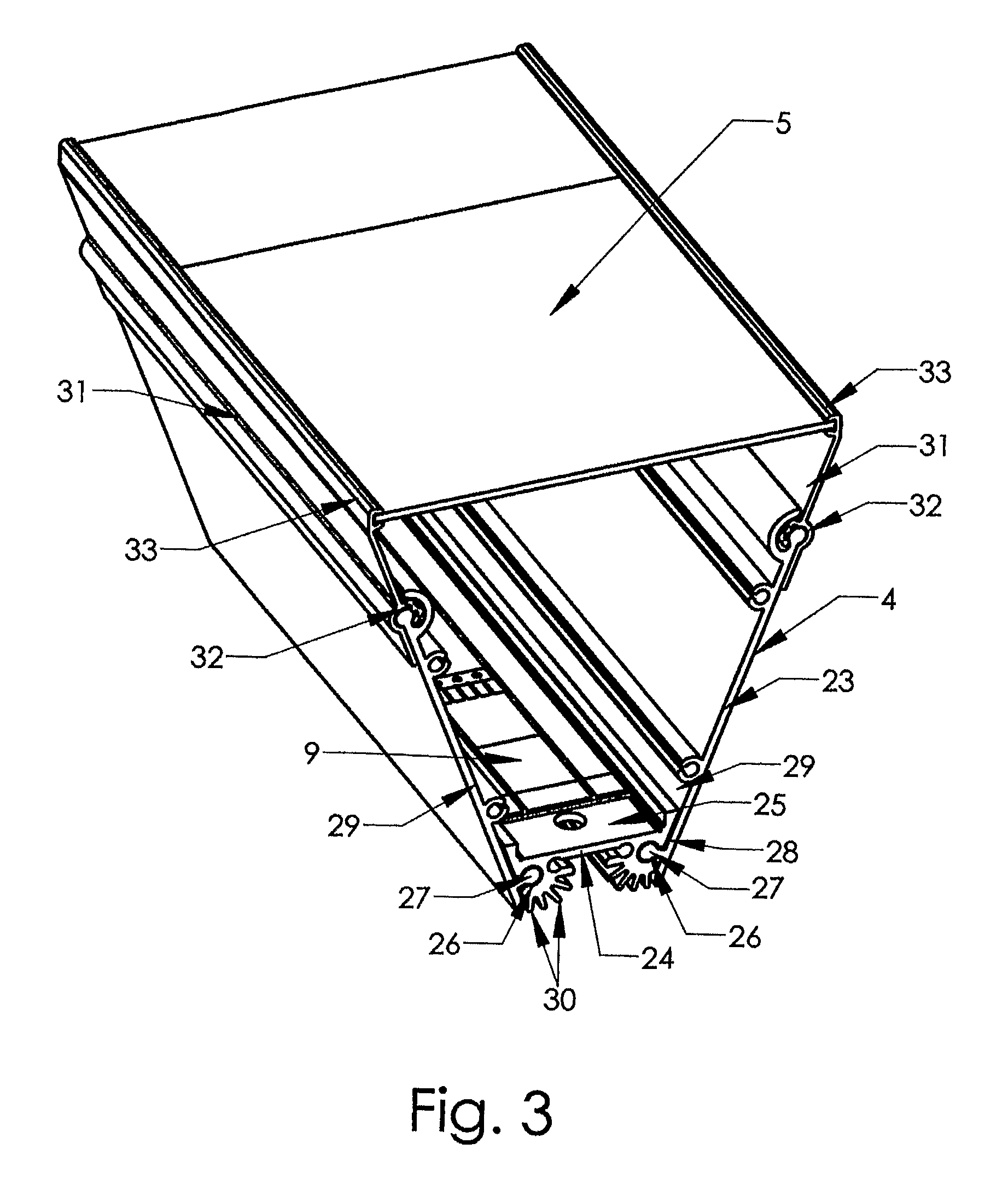Concentrating solar collector
a solar collector and concentrating technology, applied in the direction of solar heat collectors, solar-ray concentration, moving/orienting solar collectors, etc., can solve the problems of reducing the accuracy with which the module needs to be aligned with the sun, increasing stiffness, etc., and achieves uniform cross section, stable mounting, and stable mounting
- Summary
- Abstract
- Description
- Claims
- Application Information
AI Technical Summary
Benefits of technology
Problems solved by technology
Method used
Image
Examples
Embodiment Construction
[0037]Referring to FIG. 1, a concentrating solar collector 1 comprises concentrating solar collector modules 2 mounted on a frame 3. The number of concentrating solar collector modules 2 can vary. The concentrating solar collector I is shown in FIG. 1 with four concentrating solar collector modules 2, but the collector 1 can have more or less than four modules 2 in other embodiments. Indeed, typically the concentrating solar collector 1 has around twelve concentrating solar collector modules 2.
[0038]Each concentrating solar collector module 2 comprises a trough 4 with a lens sheet 5 over its open face. The troughs 4 are roughly V shaped. More specifically, the troughs 4 each have a cross section that is substantially V shaped with a truncated (or flattened) base. In other words, the troughs 4 are narrower at their base than at their open face. This can help to make the troughs 4 more rigid than comparable box or U shaped designs. The troughs 4 also have a uniform cross section along...
PUM
 Login to View More
Login to View More Abstract
Description
Claims
Application Information
 Login to View More
Login to View More - R&D
- Intellectual Property
- Life Sciences
- Materials
- Tech Scout
- Unparalleled Data Quality
- Higher Quality Content
- 60% Fewer Hallucinations
Browse by: Latest US Patents, China's latest patents, Technical Efficacy Thesaurus, Application Domain, Technology Topic, Popular Technical Reports.
© 2025 PatSnap. All rights reserved.Legal|Privacy policy|Modern Slavery Act Transparency Statement|Sitemap|About US| Contact US: help@patsnap.com



